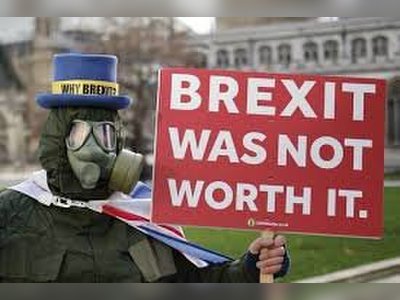Could a US$14 billion Australian solar farm provide a fifth of Singapore’s energy?
Deep in the Australian desert, the world’s largest solar farm is being built.
Its aim is ambitious: much of the power generated will be exported 3,800km to Singapore via a high-voltage, direct current submarine cable slung across the sea floor.
The farm, estimated to cost at least A$20 billion (US$13.7 billion), will have an array of 10-gigawatt solar panels spread across 15,000 hectares and will be supported by a 22GWh storage plant. Sun Cable, the Singapore firm behind the project, hopes it can produce up to 20 per cent of the country’s energy requirements.
About 95 per cent of Singapore’s electricity is generated from natural gas, with most coming from imported liquid natural gas (LNG). Singapore’s leaders have said the country will ramp up its solar energy output.
The finer details of who will buy the power on the Singapore end have not been confirmed, but iSwitch, one of Singapore’s top electricity retailers and the country’s largest green retailer, has shown a keen interest.
Andrew Koscharsky, chief commercial officer at iSwitch, said Singapore’s appetite for clean energy was growing and that the plan was a “win-win” for everyone.
“If you said to me a year ago that Singapore would have 350 megawatts of solar installed by 2020, I would have thought ‘no way in the world’ – but here we are. It’s been achieved,” he said. “Now, the next target is 2,000 megawatts by 2030. This is incredibly ambitious, but projects like Sun Cable are going to help us get there.”
Koscharsky said various companies would be interested in buying carbon-neutral electricity “with the rent and renewable energy certificate associated with it”.
“Sun Cable could also provide more stability, because all of the electricity pricing that occurs in Singapore is linked to oil markets, so when oil goes up, Singapore’s electricity goes up,” he said.
David Griffin, Sun Cable’s chief executive officer, has said consumers could expect a 20-year fixed price. Koscharsky said iSwitch could commit to anything from three to 15 years of price certainty.
Koscharsky added that Singapore’s liberalisation of the retail electricity market, which allowed the privatisation of electricity and empowered consumers to pick a provider and therefore an energy source, could serve as a guide to other countries in Asia.
“Malaysia, Vietnam, the Philippines and China are going down the path of retail liberalisation and would be exploring what works and what doesn’t work in other countries,” he said. “Singapore provides a pretty good example of how to roll out a liberalised energy market.”
While the Australian federal government has largely ignored the project, the Northern Territory government fast-tracked its approval.
Speaking at a business event in Darwin this year, Northern Territory Chief Minister Michal Gunner said the territory had “the best sun in the world” and welcomed Sun Cable’s investment.
Tony Wood, director of the energy programme at the Grattan Institute, said that while the numbers for the Sun Cable project added up, exporting energy, especially via undersea cable, was commercially risky.
“If we look at what happened to the Basslink cable to Tasmania from the mainland of Australia, it failed in a major way at least twice and was offline in 2016 for the best part of six months,” he said. “If Tasmania had been seriously dependent on that cable they would’ve been in deep trouble.
“For Sun Cable, they’re proposing to build a few hundred megawatts of batteries on the Singapore side, so if it turned out that they were lucky enough that just at the time the cable fails, the batteries are full then you’ll get some use out of that but only for relatively short eruptions.
“That commercial risk would seem to me to be by far the most significant risk. The government of Singapore is not going to be comfortable putting all of its faith in one single cable.”
Wood said reducing the risk was possible, but costly.
“They could build two cables,” he said. “The probability of two cables failing at the same time is very small. They could also not completely shut down the existing natural gas capacity there. This would mean still running the gas generating plant so you can turn it on quickly to cover the loss.
“But I don’t think anyone believes it can’t happen, if they can put together a project with enough capital behind it, then go for it. There are commercial risks to consider but there’s no reason it can’t be a success.”
Giles Parkinson, founder and editor of RenewEconomy, agreed it was an ambitious project but said the sector was increasingly ambitious too.
“There’s the Asian Renewable Energy Hub in the Pilbara, which is actually bigger than Sun Cable,” said Parkinson. “It’s going to be 15 gigawatts and it’s a mixture of wind and solar.
“Then there’s Narendra Modi, the Indian prime minister. He has even talked recently about this ‘one sun, one world, one grid’, which is basically an idea to use massive solar resources and high-voltage direct current cables to link the world into one grid.”
Sun Cable has said it would look to export to other Southeast Asian countries. Koscharsky, from iSwitch, said Indonesia, Malaysia and perhaps Papua New Guinea were obvious targets.
The challenges facing Sun Cable are illustrated by the experience of the Asian Renewable Energy Hub, which will be spread across 6,500 square kilometres in Western Australia. The hub had also planned to export via cable, to Indonesia, but then decided to generate hydrogen for export via ship to Japan and South Korea instead.
BILLIONAIRE BACKERS
Sun Cable has the support of two Australian billionaires – the Atlassian co-founder Mike Cannon-Brookes and Fortescue Metals founder Andrew Forrest, who have so far invested up to A$50 million for initial capital costs. The firm plans to reach financial close by late 2023 and complete development in 2027.
Cannon-Brookes, a tech entrepreneur who has invested in and donated to renewable energy programmes, said the Sun Cable project might seem “completely insane” but it was both financially and technically viable.
“There’s nothing engineering-wise in the individual component parts that says it can’t be built,” said Cannon-Brookes. “There is an economic model, that means the whole thing together could make it a very profitable project for the Northern Territory, for the shareholders, and for Singapore and consumers. This is all theoretically possible.”
Last year, Cannon-Brookes committed to his company being 100 per cent renewable by this year and wholly carbon neutral by 2050.
Then there is the iron-ore and LNG mining magnate Forrest. Once Australia’s richest man, he is now seen as Australia’s biggest philanthropist.
According to Parkinson, the two billionaires are part of a broader recognition that solar is the way forward.
“I think they both recognise where the market is going and that the energy transition is on its way,” he said. “These kinds of projects were always going to emerge because this is clearly the future.”
“Cannon-Brookes is as much of an activist as he is an investor and he’s prepared to put his money where his mouth is, but Forrest investing is really interesting. It’s only in the last six months that we’ve started seeing a visible interest from him in renewables.”
Parkinson said Forrest’s iron-ore mines in the Pilbara were looking at replacing gas generation with solar and battery storage.
“If he thinks it’s good enough for his iron-ore mines in the Pilbara then he understands why it might be an interesting proposition for Singapore,” he said.
On Tuesday, Forrest’s company said it planned to be a net-zero carbon emitter by 2040, a decade earlier than previously stated.
The Sun Cable project is still in the early stages of development, with production not expected to begin until later this decade but renewable energy watchers are optimistic such investments may help shift Australia’s addiction to fossil fuels and bring it in line with its commitment to the Paris climate agreement.
“It may well help shift the political conversation,” said Parkinson. “If getting behind the world’s biggest solar plant, which will include the world’s biggest battery with the world’s longest sea cable doesn’t speak to an energy transition, then what does?”















